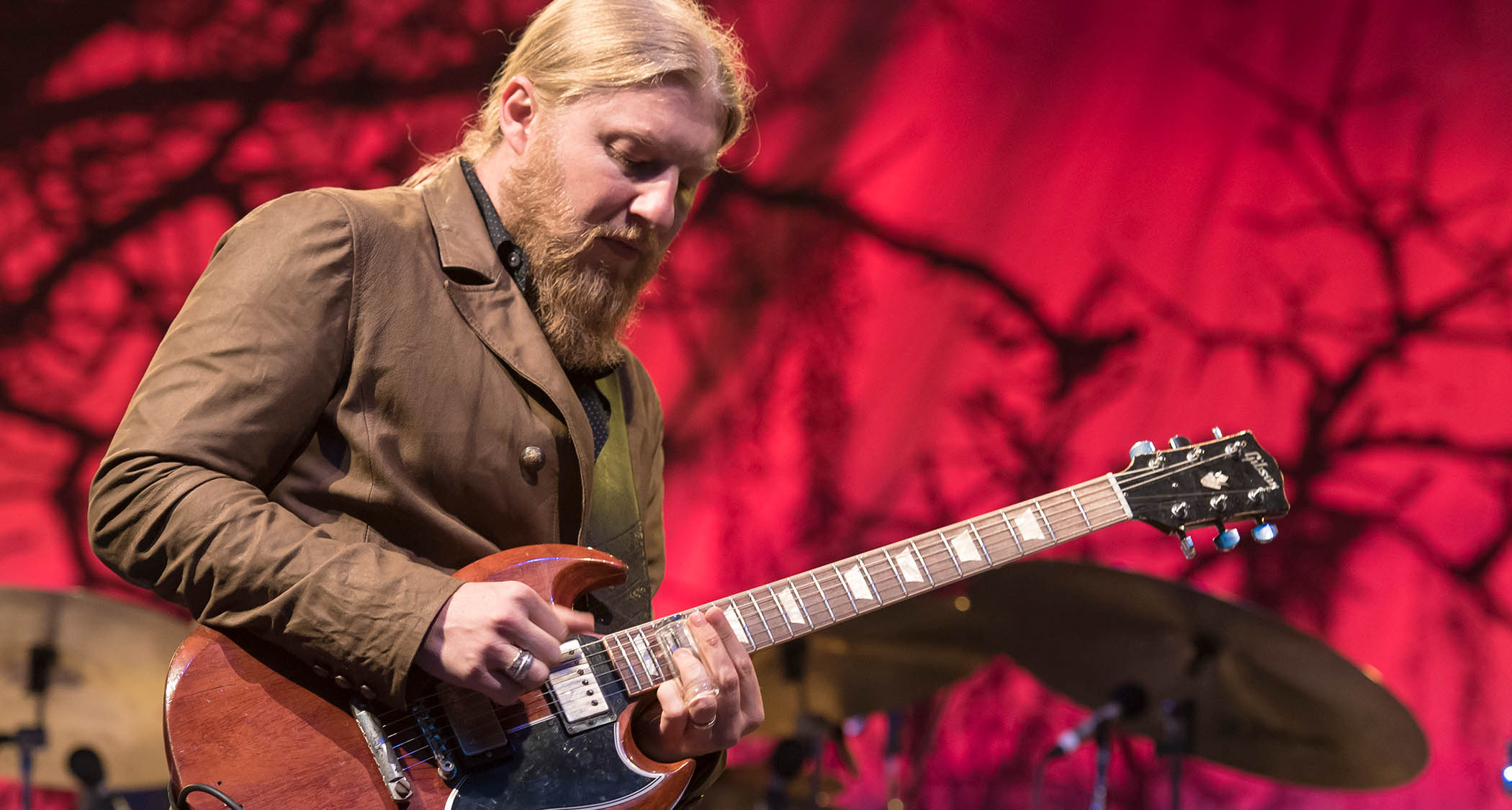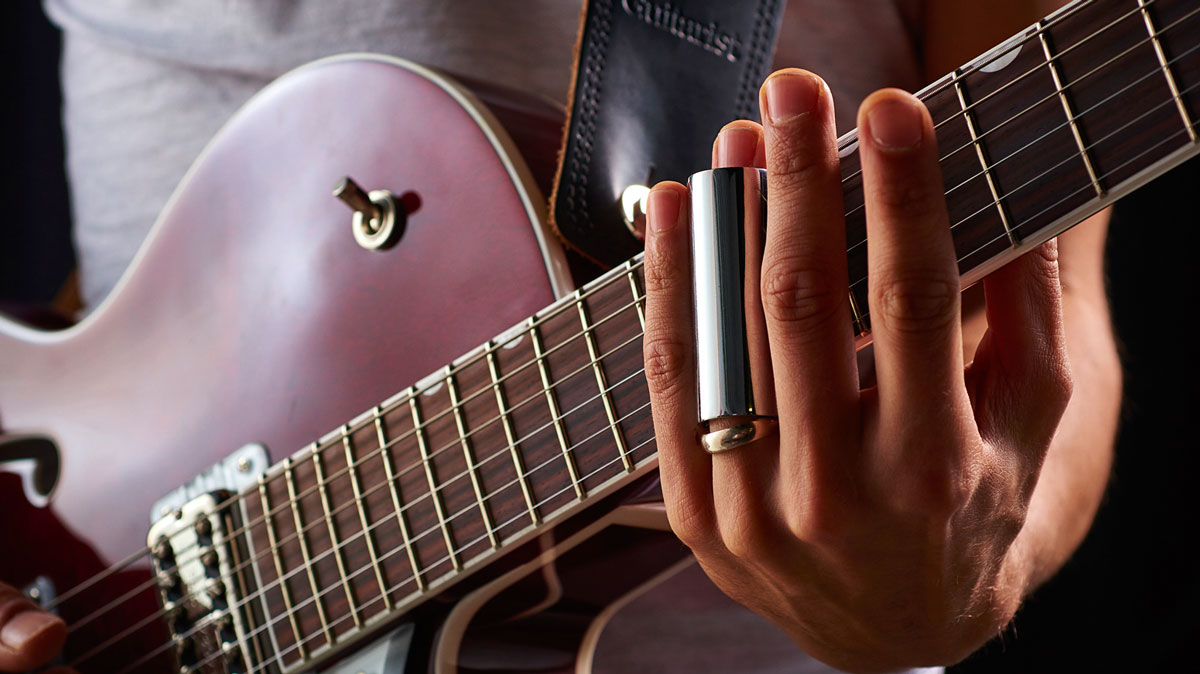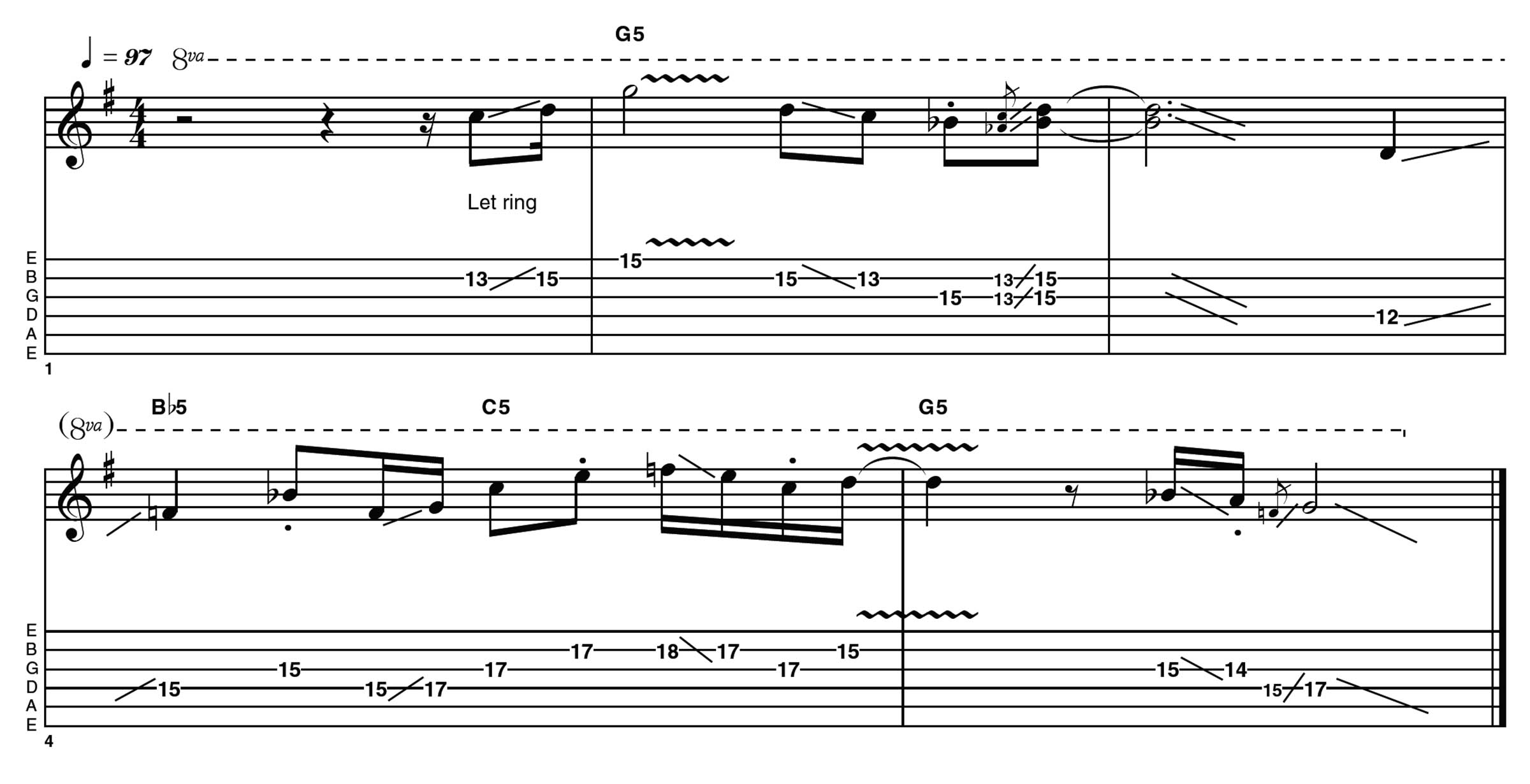“It isn’t unrealistic to try with your usual setup, provided you’re not using eights with a 1mm action”: Upgrade your blues chops now with this lesson in how to play slide guitar in standard tuning
Looking for an entry into slide playing but don't want to retune your guitar and give it a setup? This tab and audio lesson in plain ol' EADGBE will help you develop your slide vocabulary

When people talk about playing slide, the conversation often progresses on to open tunings, heavier strings, and a high action. It’s true that these can make things easier and, in some cases such as traditional acoustic blues, give a more authentic result.
But not everyone wants to carry an extra guitar with a different setup and tuning – and we know Derek Trucks sets his action low enough to play slide and non-slide on the same guitar.
As well as this, he uses an 11-gauge for the first string – not way heavier than most of us, so at least some of the ‘trick’ to this is learning the right touch and control. Playing at high volume and/or a touch of compression can help, too.
While there are no promises of shortcuts here, there is the encouragement of knowing it isn’t unrealistic to try with your usual setup, provided you’re not using eights with a 1mm action… It’s also perfectly possible to build a workable vocabulary in standard tuning.

After all, we have a minor triad on the top three strings (G-B-E) and a major triad on the next three (D-G-B). We can play doublestops in 4ths using the first and second, third and fourth, or fourth and fifth strings, plus the low E and A strings at a push.
We also get a major 3rd between the third and second strings (G and B), which can be made to work over minor chords by moving up three frets; for example, C major at the 5th fret, to C minor at the 8th.
Finally, I’m playing fingerstyle, which facilitates the muting of any unwanted strings, and using a light brass slide on the third finger of my fretting hand, which I felt gave the best control. Feel free to experiment, though.
Example 1

As you’ll hear from this first example, I’ve gone for quality over quantity. Besides, the backing track is quite rhythmic, so it felt appropriate to play something smoother and sustained, rather than add another layer of rhythm.
I’m trying to hold the longer notes still (at least for a while!), instead of defaulting to vibrato, though it does feature here a couple of times.
Perhaps the trickiest moment is at the end of bar 2, where there is a shift out of position for that Bb. The picking hand fingers are a great help with muting unwanted notes here.
Example 2

Starting on a similar theme, this example also benefits from the extra muting facilitated by playing fingerstyle. Like Example 1, this is basically a pentatonic phrase with a couple of additions.
Bar 3 serves as a nice demonstration of how the first and second strings give us a 4th doublestop to play with, which I use fairly randomly to finish off the phrase. I’m using a 10-gauge for the first string, so this takes quite a light touch.
Example 3

Building further, this example shows how you can play in G minor by taking the doublestop up three frets. I’m now playing in the relative major: Bb.
This is followed by some longer sustained notes based roughly around the Bb major scale as we head into C, then incorporating some longer slides to use the bottleneck for maximum effect. Those final sliding doublestops use the 4th, which is available using the third and fourth strings.
Example 4

In this final phrase, I’ve headed for a higher register, where the margin for error is at its smallest! It’s basically a pentatonic shape again, but it moves to use the Bb and C chords available on the 15th and 17th fret of the second, third, and fourth strings.
There’s a hint of sus4 (albeit slightly flat) happening over the C chord, before returning to the pentatonic. This is slightly more ‘choppy’ and staccato in feel, aided greatly by muting from the picking hand.
Hear it here
The Allman Brothers Band – At Fillmore East
Duane Allman will forever be associated with his slide playing at the end of Clapton’s Layla, but this is only a fraction of his legacy. He usually played in open E tuning, but there are still quite a few licks to steal from the likes of Statesboro Blues, Done Somebody Wrong, and Trouble No More. Listen to his non-slide playing on In Memory Of Elizabeth Reed, too. This is an important guitar album of the time.
Ariel Posen mixes blues, country, and pop with some great slide-guitar playing, predominantly using standard tuning (albeit in drop C). There’s lots of smart non-slide playing on this album, too, as Posen likes to mix both, wearing the slide on his fourth finger.
Start by checking out Things That I’ve Said, Fade, and – if you’re ready for a challenge – check out how he integrates slide seamlessly into his fingerstyle playing on the short instrumental, Daybreak.
The Derek Trucks Band – Already Free
Anyone interested in slide guitar will likely have heard of this man. If not, check him out immediately! This is his final studio album before joining with the fabulous Susan Tedeschi to form the Tedeschi Trucks Band, which should also be on your radar.
In the meantime, check out his playing on Sweet Inspiration, Don’t Miss Me, and Down Don’t Bother Me. There’s a lot more than this going on, though, so do check out the whole album if you can.
Get The Pick Newsletter
All the latest guitar news, interviews, lessons, reviews, deals and more, direct to your inbox!
As well as a longtime contributor to Guitarist and Guitar Techniques, Richard is Tony Hadley’s longstanding guitarist, and has worked with everyone from Roger Daltrey to Ronan Keating.











![Joe Bonamassa [left] wears a deep blue suit and polka-dotted shirt and plays his green refin Strat; the late Irish blues legend Rory Gallagher [right] screams and inflicts some punishment on his heavily worn number one Stratocaster.](https://cdn.mos.cms.futurecdn.net/cw28h7UBcTVfTLs7p7eiLe.jpg)
